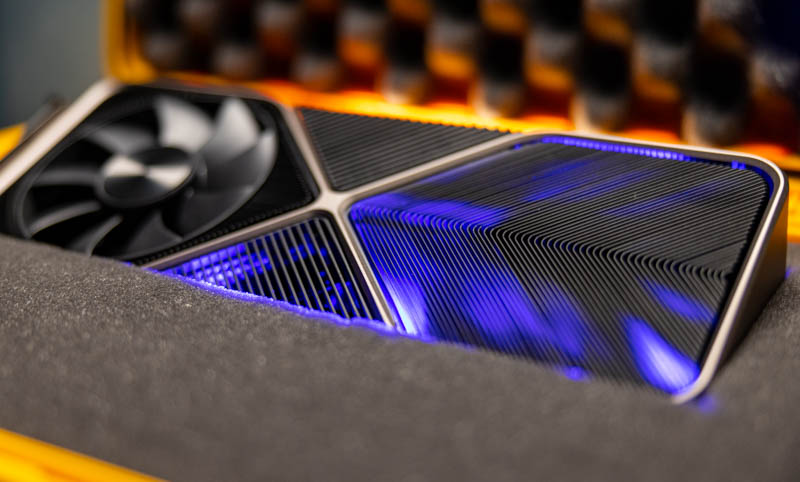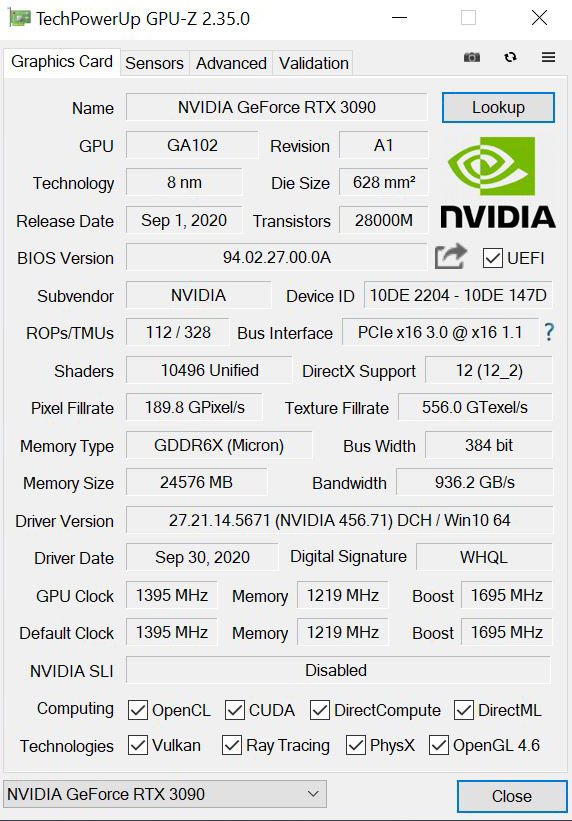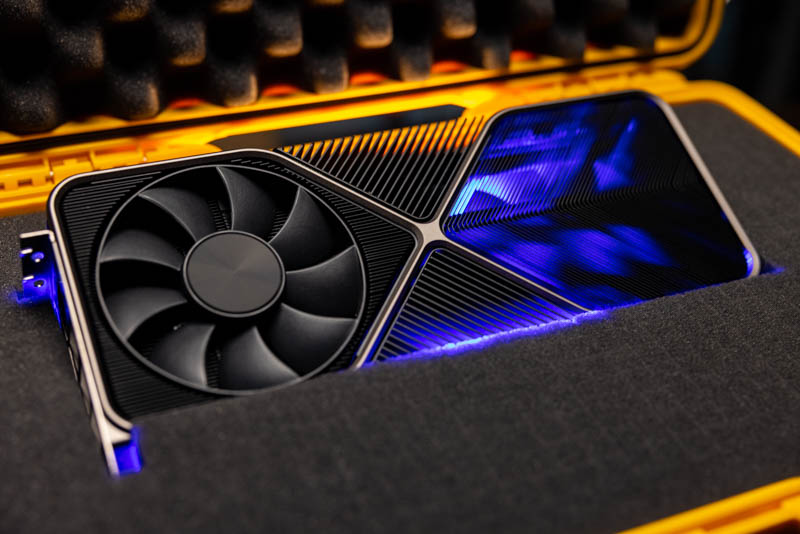NVIDIA RTX 3090 Specifications
The specifications for the NVIDIA RTX 3090 uses 24GB GDDR6X memory and 350W of power. Here is the high-level spec of the card compared to two GPUs from the previous generation, the Titan RTX and the Quadro RTX 8000.

The reason we are showing this higher-level spec comparison is that in our performance charts, the GeForce RTX 3090 is going to usually perform between the two options. I am currently working on a Quadro RTX 6000 review, so we will have comparisons from that angle soon.
Testing the NVIDIA GeForce RTX 3090
Here is our test configuration:
- Motherboard: ASUS ROG Zenith II Extreme Motherboard
- CPU: AMD Threadripper 3960X (24 cores / 48 Threads)
- GPU: NVIDIA GeForce RTX 3090
- Cooling: NZXT Kraken X62
- RAM: 4x Corsair Dominator Platinum RGB 3600 MHz 16GB (64GB Total)
- SSD: Sabrent Rocket 4.0 NVMe PCIe Gen4 x4 M.2 SSD
- PSU: EVGA Supernova 1600 T2
- OS: Windows 10 Pro
For the photos above, we had this GPU inside a Pelican 1485 case with foam we customized for the GeForce RTX 3090. That case, along with the studio blue backlighting is not included with the card (but maybe it should be a premium packaging bundle?)

Here is the obligatory GPU-Z shot of the NVIDIA RTX 3090 FE:

GPU-Z shows the primary stats of our testing the RTX 3090 FE. The GPU clocks in at 1395 MHz and can boost up to 1695 MHz. Pixel Fillrates run at 189.8 GPixels/s, and Texture Fillrate comes in at 556 GTexel/s, while memory runs at 1219 MHz. Again, we see 24GB of GDDR6X memory on the RTX 3090 FE.

Let us move on and start our testing with computing-related benchmarks.




Are you using the Tensorflow 20.11 container for all the machine learning benchmarks? It contains cuDNN 8.0.4, while the already released cuDNN 8.0.5 delivers significant performance improvements for the RTX 3090.
Great fp64 performance..
It’s not great fp64. The 3090’s AIDA64 GPGPU score of 638 is less than 10% of the 6351 FLOPS my Radeon Pro VII pulls down. https://twitter.com/hubick/status/1324203898949652480
How did the NVlinked, Titan RTXs and Quadro RTX 8000s get better than 100% scaling in OctaneRender 4.0?
Chris Hubick
‘
Misha, as well known AMD shill, is being facetious – and this is a graphics card and not a compute card like the Ampere A100 – which trades the RT cores for FP64…
Would love to see this dataset run on a A100 for comparison, is that review coming as well or are those datasets not public?
Hi,
I LOVE the GeForce and Threadripper compute reviews (especially the youtube video reviews!)
However, for our work load, we really need to know how the hardware performs for double-precision memory-bound algorithms.
The best benchmark that matches our problems (computational physics) is the HPCG benchmark.
Would it be possible to add HPCG results for the reviews? (http://www.hpcg-benchmark.org/)
Also, for some other computational physicists, having the standard LinPack benchmark (for compute-bound algorithms) would be really nice to see as well (https://top500.org/project/linpack/)
– Ron